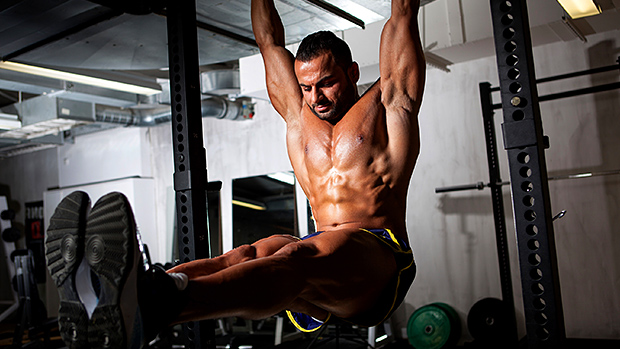We all want our workouts to be effective and efficient, but human physiology and psychology are complex. There are a lot of variables to manage. Sometimes, in our eagerness to optimize training time and check all the boxes, we end up wasting time on the superfluous.
When this happens, workouts become flat, unfocused, and uninspiring. Like a good story, every workout has three distinct phases: a beginning, a middle, and an end. What you do – or what you don't do – during each phase can make or break your progress.
Here are three common mistakes to avoid.
Warm-ups are like workout foreplay – they get your blood flowing and build toward the main event. Yet, too many people take the opposite approach, supplanting the main workout with a never-ending stream of stretches, foam rolling, and "activation" drills before touching a weight.
As well-intentioned as these practices may be, nothing sucks the soul from a workout faster than a protracted warm-up.
Most of these activities focus on either turning "off" tight, overactive muscles to allow for a larger range of motion, or turning "on" weak, underactive muscles to encourage them to do their job.
Unfortunately, the human body isn't a piano that can be tuned by loosening certain strings while tightening others. It would be nice if it were that simple. That's why reverse-engineering compound movements into constituent chunks and then trying to optimize each part in isolation rarely pays big dividends.
Here's what to do instead:
Assuming you're not dealing with a specific injury or just want to spend large amounts of time dedicated to doing feel-good stuff, try this:
- Jump on a bike, treadmill, or rowing machine for 5-10 minutes. This is enough to increase your heart rate, blood pressure, and core temperature. It'll also start to influence the rate at which your blood cells disassociate oxygen for use by the muscles, which makes energy more readily available.
- Next, choose one or two active mobility exercises that are specific to the primary movement patterns for that day, plus one lightweight, ballistic exercise to act as a bridge between the lower intensity warm-up and the main workout. Perform two to three rounds in a circuit format.
Here are two examples:
Upper Body Push Warm-Up
Yoga Push-Up
Kettlebell Arm-Bar with Reach
Medicine Ball Chest Pass
Lower Body Pull Warm-Up
Hip Bridge March
Rope Pull-Through:
Kettlebell Swing
Finally, there's no more specific of a warm-up than simply doing the actual patterns involved in the lift. That's why I frequently use 2-5 ramp-up sets for main lifts. Think of these as lightweight, low-risk rehearsal sets leading up to the main event.
Not only is this a great way to accumulate submaximal volume, it also turns "on" the exact muscles you want in a way that's specific to how you want to use them.
I'm a bit of an efficiency nut. So, when the idea of pairing mobility or core stability drills between main lifts emerged, I was all in. Finally, a way to fill the time gap with something low amplitude and low energy while cutting down warm-up time!
It sounded good in theory but always sucked in practice. It never dawned on me why I found it so hard to get "up" for workouts that had these compound/mobility/core stacks built into them.
I don't think there's a great physical explanation – you're not really working hard enough on the supplementary exercises to accumulate enough fatigue to detract from your main lifts – but there may be a psychological one.
The part of your brain responsible for movement – your motor cortex – splits its time performing two interrelated functions. First, it initiates and carries out movement tasks (duh). Second, it interprets sensory information about that movement and figures out how to do it better.
The problem is that each one of these functions lives in very different physical, cognitive, and emotional worlds inside us.
Heavy, compound, high-threshold activities require your motor system to fire on all cylinders to blow past the various internal physiological and mental alarms that get tripped when your cells are being blasted with heat, tension, and acidity.
This isn't the time to compose poetry, ponder nuclear disarmament, or work on feeling the anterior fibers of your gluteus medius in isolation. This is the time to grind. And that requires a particular frame of mind that eschews feelings for actions.
Switching back and forth between the two systems is like trying to do calculus problems between laps at the Indianapolis 500.
Here's what to do instead:
- Put your low-effort, high-sensory activities into your warm-up, cool down, or, better yet, do them before bed or on a separate day altogether.
- Use timed rest periods. If you're trying to get lean, limit your rest periods to 60-90 seconds. If you're trying to bulk-up or get stronger, extend them to 2-5 minutes. And then do what you're supposed to be doing between sets: Rest, you maniac.
- If you're really pressed for time, or just can't help yourself, try using antagonistic supersets instead, and make sure to use submaximal weights to avoid excess fatigue. Additionally, use basic strength-training exercises (nothing that requires lying on the floor).
Here are some good pairings for the major lifts:
Pair Bench Press With Horizontal Cable Row
Pair Military Press With Cable Lat Pulldown
Pair Squats With Dumbbell RDL
Pair Deadlifts With Overhead Med Ball Slam
The research is pretty clear in this area: Doing cardio after weight training is like tying your shoelaces together before a road race.
Aerobic and anaerobic exercises trigger opposing signaling pathways and lead to competing adaptations inside your body. Resistance training activates a signaling pathway called mTOR, which initiates intercellular processes that culminate in an increase of muscle protein synthesis, i.e., bigger muscles.
Aerobic training, on the other hand, activates a different pathway, called AMPK, which leads to mitochondrial biogenesis and, consequently, more endurance.
The problem? These two pathways don't play nicely in the sandbox together. AMPK signaling actually inhibits mTOR, closing the adaptive window you just worked so hard to open.
None of this is to say you can't train for cardiorespiratory capacity – it probably just doesn't make sense to do it in the same session that you're trying to build bigger, stronger muscles.
Here's what to do instead:
If you're limited in the number of days per week you can train, your best bet is to add 5-15 minutes of HIIT at the end of a lift. In other words, do repeated bouts of high intensity exercises followed by varying amounts of recovery time.
If you're able to get in the gym more frequently, do your cardio work on non-lifting days.
Personally I'm competitive, so I've always been a fan of workout challenges as finishers. Here are a few ideas:
Escalating Calorie Challenge (Assault Bike)
Get on an Assault Bike and pedal as fast as you can. Once you burn 2-calories (this should only take a few seconds), slow to a recovery pace until you get to the one-minute mark.
Now start over, this time pedaling as fast as you can until you burn 4-calories.
Repeat, adding 2-calories per minute until you can no longer continue making linear progress.
2500-Meter Row
Cardio goals can be oriented around time or distance. Time goals allow for wiggle room, i.e., when things get tough you can hide out and go through the motions until the clock stops. Distance goals show no such mercy. Taking your sweet time just means prolonged suffering.
Doing 2500 meters on a rower is a miserable affair, but it builds your engine and gives you a massive arm pump so you build capacity and sort of feel like you've lifted weights, too.
Three Minute Density Sets
Machines not your thing? No problem. Grab a barbell, pick a "big" exercise (squats, deads, bench, presses, rows, etc.), and load it up with your 15RM weight. Now set a clock for 3-minutes.
Perform as many reps as you can within the allotted time, resting as necessary.
Rest for 5-minutes.
Do it again.
Track the total number of reps between the two sets.
Do better the next workout.





